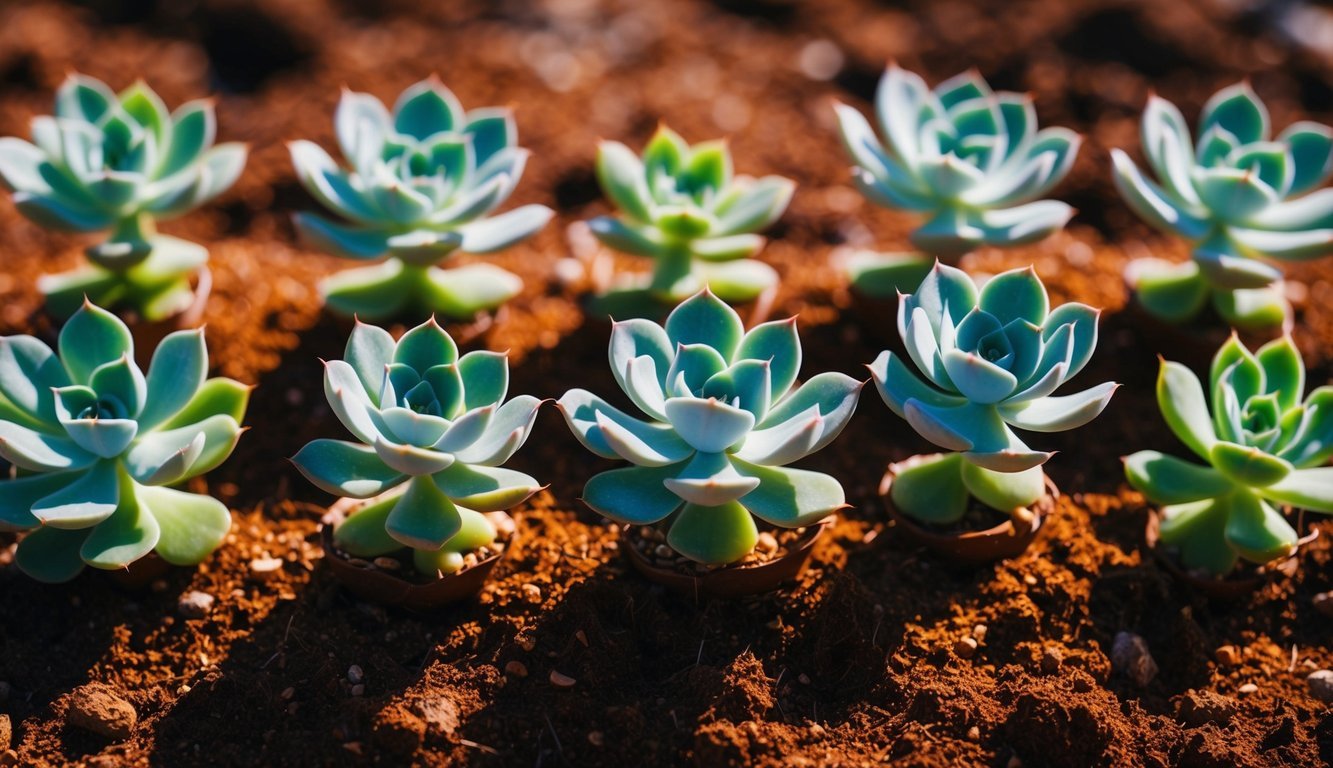
Exploring the captivating world of succulents brings to light an incredible variety of traits and characteristics these remarkable plants exhibit.
One particularly intriguing feature is the lifecycle of certain succulents, which flower only once before completing their lives and dying.
Nine Monocarpic Succulent Species to Know
- Aeonium
- Agave
- Aichryson
- False Agave
- Jovibarba
- Kalanchoe
- Orostachys
- Sempervivum
- Yucca
The term “monocarpic” has origins in Greek, where “mono” means one, and “karpos” means fruit.
This describes plants that complete their entire life cycle following a single blooming event.
Gardeners often refer to this process as the “death bloom.”
Understanding Monocarpic Lifecycles
Monocarpic plants are sometimes described as employing a “suicidal reproductive strategy.” While you may come across terms like hapaxanthic and semelparous in relation to these plants, they specifically denote the phenomenon of stems dying after flowering, rather than the entire plant.
True monocarpic plants originate from a single zygote and conclude their life journey upon producing flowers and seeds.
Detailed Look at Monocarpic Succulents
Before their demise, most monocarpic succulents produce offsets or plantlets, which serve as genetic duplicates of the parent plant.
These offshoots can root themselves and grow independently, ensuring the continuation of their lineage.
It’s important to clarify that not all succulents are monocarpic.
For example, Echeveria, various Crassula, Peperomia, and Sedum are wrongly categorized as such; they are in fact polycarpic.
Now, let’s investigate each of these nine fascinating monocarpic succulent species more closely:
- Aeonium
Many tree houseleeks, known scientifically as Aeonium, are monocarpic, particularly those showcasing rosette formations with a single flower stalk.It’s generally safe to assume any Aeonium is monocarpic unless specified.
Primarily native to the Canary Islands, these plants thrive in garden settings across USDA Zones 9 to 11 and can also be beautiful houseplants.
- Agave
Known for its role in tequila production and as an ornamental plant, the Agave genus includes many species that flourish in USDA Zones 7 to 12, depending on the type.Although many Agaves are polycarpic, the famous century plant (A. americana) is a well-known monocarpic variety that blooms once after decades of growth before it ultimately dies.
- Aichryson
This genus encompasses succulents from the Canary Islands, Azores, and Morocco that thrive in cooler, humid environments.It comprises several species, all classified into two sections: Aichryson and Macrobia, with the former being entirely monocarpic.
- False Agave
Represented by the Furcraea genus, commonly known as false agave, all its species are monocarpic and can produce stunning flower stalks that soar over 40 feet tall.Depending on the specific species, these plants can adapt to hardiness zones ranging from 8 to 12.
- Jovibarba
Botanists frequently reclassify all species once regarded as Jovibarba under the Sempervivum genus.These plants are recognized for their remarkable tubular, bell-shaped flowers, which appear before they die off.
- Kalanchoe
Though some species within the Kalanchoe family are monocarpic, distinguishing them by sight can often be a challenge. - Orostachys
Often confused with Echeveria or Sedum, the Orostachys genus includes primarily polycarpic species, but some can experience a single flowering event before meeting their end. - Sempervivum
Members of the Sempervivum family are confirmed monocarpic species.When these plants bloom, it typically indicates they are nearing the end of their lifecycle, although they do produce offsets to continue their genetic line.
- Yucca
While most Yucca varieties are polycarpic, some species, like the chaparral yucca (Y. whipplei), show monocarpic tendencies and can grow elegant flower stalks.
Many plant enthusiasts express sorrow after losing a cherished succulent, mistakenly attributing the loss to care mishaps.
It’s essential to understand that certain succulents naturally follow a lifecycle pattern that includes one bloom followed by death.
Recognizing these characteristics can enrich your experience as a succulent lover and deepen your appreciation for these fascinating plants.
Source: Gardenerspath

